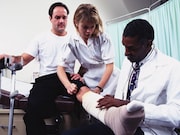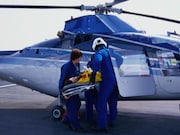Tag: Injuries
Helmet Use Low Among Standing Electric Scooter Riders
10.8 percent of riders presenting to ED with injury were younger than 18; 4.4 percent wore helmet
Considerable Morbidity, Mortality Due to Animal Encounters
Greatest number of deaths for bites from nonvenomous arthropods; rat bites most lethal
Peds Firearm-Related Injuries Lead to Clinical, Financial Burden
Total charges associated with pediatric firearm-related injuries $2.5 billion for 2006 to 2014
Opioid Use Often Persists in Workers’ Compensation Claimants
Persistent use linked to older age; crush, strain, and sprain injuries; concomitant chronic pain
Almost One in 10 Treated in Hospital for Non-Fatal Injury
Costs of hospital-treated non-fatal injuries estimated at $1.853 trillion; $168 billion in medical spending
Lawn-Mower-Related Injuries Are Most Often Lacerations
Weighted estimate of 51,151 injuries from 2006 through 2013; 46.7 percent lacerations
Black Individuals at Highest Risk of Legal Intervention Injury
Increase in rates of injuries from 2005 to 2009, followed by a drop to 2015, returning to ~2005 levels
FDA Warns of Dangers of Liquid Nitrogen in Food, Drinks
Liquid nitrogen can cause severe damage to skin and internal organs if mishandled or consumed
Honey May Protect Children Who Swallow Button Batteries
Honey and Carafate appear to rapidly protect against batteries' caustic effects
Prehospital Plasma Cuts Mortality Risk in Hemorrhagic Shock
Prehospital administration of thawed plasma reduces mortality versus standard-care resuscitation














